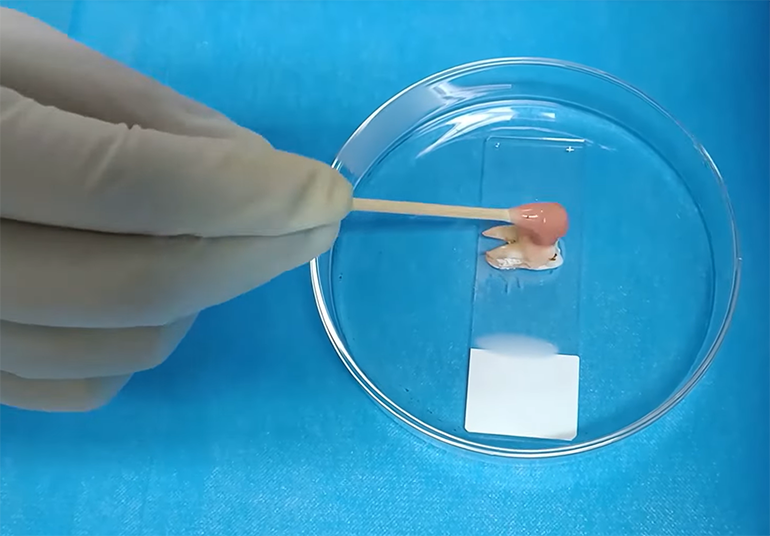Researchers at Nanchang University in China developed a photodynamic hydrogel treatment for teeth that disrupts bacterial biofilms, helps to prevent cavities, and whitens teeth. The gel is applied to the teeth and is then activated using green light, which is less harsh on nearby skin than the high intensity blue light that is sometimes used for teeth whitening procedures. The treatment contains copper oxide nanoparticles and bismuth oxychloride nanoparticles, and sodium alginate was used to create the hydrogel delivery vehicle. The gel works by releasing reactive oxygen species when illuminated with green light, which helps to destroy biofilms and remove stains.
While not strictly a medical issue, tooth discoloration can lead to reduced self-confidence and increased self-consciousness. The problem can be hard to avoid, as many of us enjoy coffee or red wine, both of which can stain the teeth. In response, some people seek teeth whitening solutions, which frequently involves a dentist applying a gel containing hydrogen peroxide to the teeth and using high-intensity blue light to create reactive oxygen species that help to remove the stains.
While such treatments are effective, this high-intensity blue light can be harsh on the eyes and exposed skin. Moreover, these gels can create reactive oxygen species to the point that they can damage tooth enamel, which is clearly undesirable. While we can debate the medical importance of tooth discoloration and the need for tooth whitening, cavities are a more serious issue that can lead to a lot of pain and discomfort.

To address all these issues in one swoop, these researchers created a new type of tooth whitening treatment that also disrupts bacterial biofilms and helps to prevent cavities. The gel contains copper oxide nanoparticles and bismuth oxychloride nanoparticles that are activated by green light, which is gentler on the eyes and skin. While the gel also removes stains through reactive oxygen species, the researchers report that it is more gentle on tooth enamel than conventional treatments.
So far, the researchers have shown that the gel killed 94% of bacteria in a biofilm. They also tested the gel in its ability to prevent cavities in mice that had their mouths inoculated with bacteria that causes cavities, and showed that the gel treatment helps to prevent moderate and deep cavities.
Here’s a video from the American Chemical Society about the new technology:
Study in ACS Applied Materials & Interfaces: Fast Cross-Linked Hydrogel as a Green Light-Activated Photocatalyst for Localized Biofilm Disruption and Brush-Free Tooth Whitening
